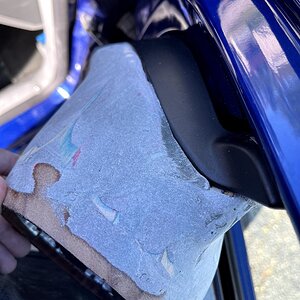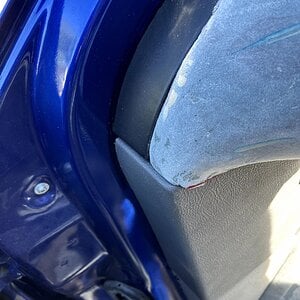Prototyping Board {printed circuit board} comes in many different designs.
It's pretty expensive actually and you can use a cheaper method to wire up
crossovers.
Protoboards [simple to complex].
http://www.alliedelec.com/Search/ProductDetail.asp?SKU=237-0119&SEARCH=&ID=&DESC=8000%2D45&R=237%2D0119&sid=45A2DB004273E17F
1. The circuit board typically FR4 material with pre-drilled holes. Hole size varies
per design, and hole center to center spacing is typically 100 mils. The cheap
board has no copper pads so when you install a component, there is nothing to
solder the lead to. The only way to make this work nice is to glue each component
to the PCB so it won't fall off. Kinda stinks if you have to modify your design later.
2. The good PCB is where there is a copper pad around the hole so you can
solder the component lead to it as it secures the component in place so it
doesn't fall off the board.
3. The next type of PCB is where they put a pad on both sides of the PCB and
plate through the hole so there is electrical connection between the top and bottom side pads. Do you need this? No really but it cost more.
4. They also make esoteric protoboards with buss bars where a group of pads
are all connected together electrically to form a common bus. For instance,
you can use this as a power and ground buss. Once you solder the parts to
the bus, no additional wiring is needed as the pcb has the bus trace.
5. They also make other weird protoboards so beware of what you buy.
DIY PCB
One cheap way to make your own circuit on a PCB is to get some copper
clad board, ink resist pen, and some etchant. You do some preliminary parts
placement on the board and estimate where the component holes will be
and draw a solid pad using the pen. Draw a pad much bigger than the hole
size that you plan to drill later. Draw all the component holes. Then
draw the circuit with the pen connecting the dots according to the schematic.
Draw thick traces. Etch the board. Drill the component pads. Install the parts,
solder. /done
The fancy way to do this is using rub on decals or you do the design on
a computer and transfer the design to the copper clad board or have a fab
house build your custom board [not cheap].
DIY non PCB
Get some thin hardwood {masonite} 1/8" if you can find it. Mount your parts,
drill some holes, use tie wraps or glue to hold the parts in place. Point to point
wiring.
http://www.humblehomemadehifi.com/Optimo_bestanden/image050.jpg
http://www.humblehomemadehifi.com/HATT-III_bestanden/image024.jpg
Whatever method you choose, SQ will not be affected.









